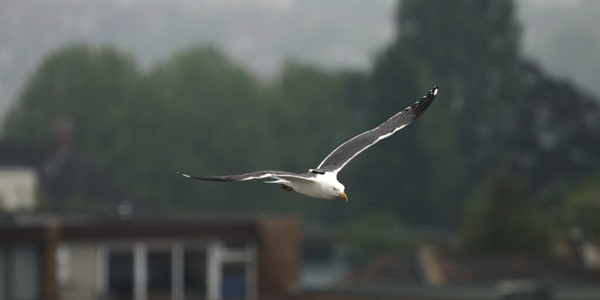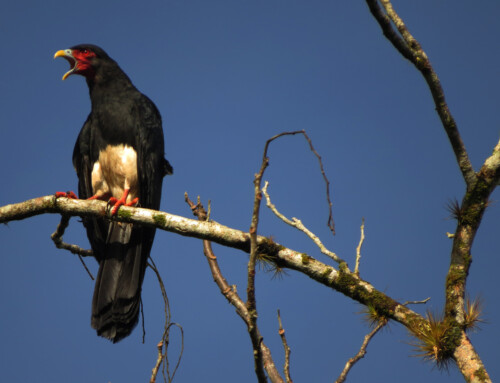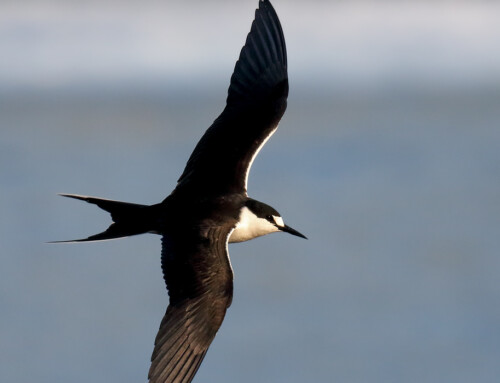LINKED PAPER
Habitat use of urban-nesting lesser black-backed gulls during the breeding season. Spelt, A., Williamson, C., Shamoun-Baranes, J., Shepard, E., Rock, P. & Windsor, S. 2020. Scientific Reports. DOI: 10.1038/s41598-019-46890-6. VIEW
Currently, around 55% of the 7.7 billion people on our planet lives in urban areas and this is expected to increase to 68% by 2050 (United Nations). Urbanisation of the landscape can have enormous consequences for animal and plant species living in these areas resulting in lower species diversity and richness amongst others (Shochat et al. 2006). However, some animals can adjust to life in the city and take advantage of the urban environment for breeding and foraging. Examples have been observed all around the world from foxes and badgers in Europe to bears in Canada and leopards in India.
A highly adaptable species are the birds which are known to the public as ‘seagulls’. However, scientifically there is no such thing as a ‘seagull’, and if you have visited some of the UK cities you might have encountered gulls far from the sea. Some of these gulls are nesting on rooftops and this has happened in the UK since 1940 (Rock 2005). Since that time multiple species of gulls have established substantial urban-nesting populations (Figure 1). These so-called urban-nesting gulls are most likely breeding in the city because of anthropogenic food resources, warmer temperatures, ample nesting sites, lower predation rates and potentially lower flight costs (Rock 2005, Shepard et al. 2016).
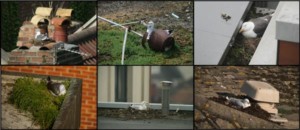
Figure 1 Examples of the diversity of gull nests on rooftops in Bristol, UK © Anouk Spelt / Cara Williamson
The increase in gulls in the city is linked to an increase in conflicts with people, resulting in perceived problems such as aggression, mess, noise and damage to buildings. A range of control measures have been implemented, of which some seem to be effective locally, but are temporary and are not effective on a larger scale. Little is known about gulls nesting in urban areas and how they utilise the urban environment. Therefore, there is a need to understand the behaviour of these birds in urban settings and how they make use of their environment in order to inform management and conservation decisions in relation to increasing urban gull populations.
We fitted 12 Lesser Black-backed Gulls, Larus fuscus¸ in Bristol (UK) with long-term GPS tracking units (Bouten et al. 2013) to quantify how urban-nesting gulls utilise their environment over the course of the breeding season (Figure 2). Interestingly, we found that despite the proximity of the sea (~10 km) the birds did not use the sea at all during the breeding season, only making use of terrestrial environments (Figure 3). However, they were not completely urban as they spent 1/3 of their time away from the nest in agricultural fields. Apparently, their energy gain in terrestrial environments is higher for these gulls than foraging in the marine environment. We also observed that the use of suburban and urban habitats increased over the course of the breeding season when the chicks’ food demand increased. A shift in habitat use and diet is quite common in gull species. Possible explanations for the shift in habitat use found in this study could be that anthropogenic resources can be very predictable, higher in energetic value and/or closer to the nesting area.

Figure 2 Urban-nesting gulls with GPS backpacks and colour rings © Anouk Spelt / Cara Williamson
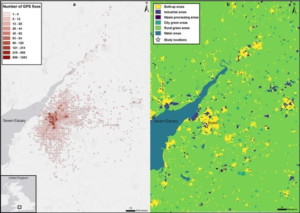
Figure 3 Map of density of GPS location fixes (left) in relation to habitat type (right)
Additionally, we found that the behaviours of the gulls (time-activity budgets) differed between the habitats they visited, which might reflect different foraging strategies. Figure 4 shows four examples of time-activity budgets at specific feeding grounds in Bristol: city centre, agricultural land, landfill and sewage works. The time-activity budgets corresponded very well with the behaviours of gulls observed at these sites. A very interesting foraging behaviour was observed at the sewage works, where gulls would wait lined up along the wall of the sewage flow and then fly down to snatch food waste from the sewage water that flowed past. These different time-activity budgets related to habitat type probably reflect the availability of resources and the foraging strategies needed to acquire them in each of the habitat types, with different costs and intake resulting in differing profitability for each habitat.
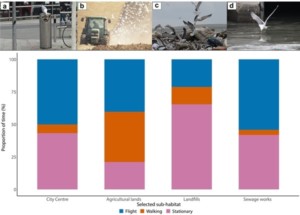
Figure 4 Different observed foraging strategies (above) and time spent on different behaviours at specific feeding grounds (below) © Anouk Spelt / Cara Williamson
Urban gull populations will steadily increase and therefore there may be a need to manage these populations to mitigate human-gull conflicts. Understanding the behaviour and habitat use of urban-nesting gulls is therefore crucial when trying to control and/or prevent these conflicts. This study provided more insight into the habitat use and the behaviour of urban-nesting gulls in Bristol during the breeding season. When developing control measures, it should be considered that urban-nesting gulls are not only using the urban environment but also areas outside the city. Therefore, control measures such as the removal of access to waste processing centres might not be sufficient to manage gull populations as they may shift their foraging efforts to other food sources. Many other species that thrive in the urban environments are facing similar conflicts with humans (Soulsbury & White, 2016), thus understanding the behaviour of these urban species in detail is important as it could alter current management policies.
Nominate this article for a BOU Science Communication Award.
References
Bouten, W., Baaij, E.W., Shamoun-Baranes, J. & Camphuysen, K.C.J. 2013. A flexible GPS tracking system for studying bird behaviour at multiple scales. Journal of Ornithology 154: 571–580. VIEW
Rock, P. 2005. Urban gulls: problems and solutions. British Birds 98: 338–355. VIEW
Shochat, E., Warren, P.S., Faeth, S.H., McIntyre, N.E. & Hope, D. 2006. From patterns to emerging processes in mechanistic urban ecology. Trends Ecology Evolution 21: 186–191. VIEW
Soulsbury, C.D. & White, P.C.L. 2016. Human–wildlife interactions in urban areas: a review of conflicts, benefits and opportunities. Wildlife Research 42: 541–553. VIEW
Shepard, E.L., Williamson, C., Windsor, S.P. 2016. Fine-scale flight strategies of gulls in urban airflows indicate risk and reward in city living. Philosophical Transactions of the Royal Society B: Biological Sciences 371: 20150394. VIEW
Windsor, S. (n.d.) Flight energetics of urban Lesser Black-backed Gulls: A case study for bio-inspired (flight/UAV) technology. Available at: https://www.uva-bits.nl/project/flight-energetics-of-urban-lesser-black-backed-gulls-a-case-study-for-bio-inspired-flightuav-technology/. VIEW
Image credits
Featured image: Lesser Black-backed Gull, Larus fuscus © Anouk Spelt / Cara Williamson


